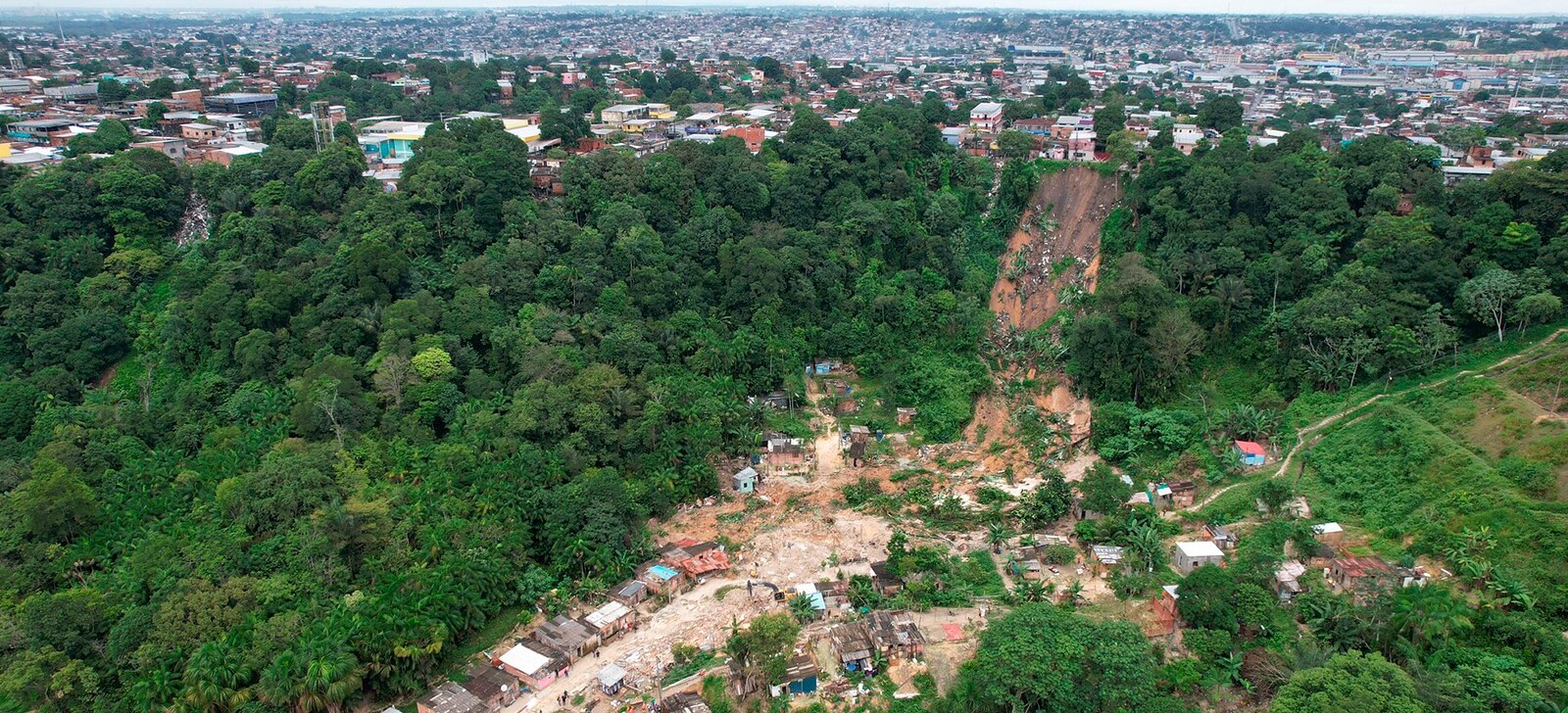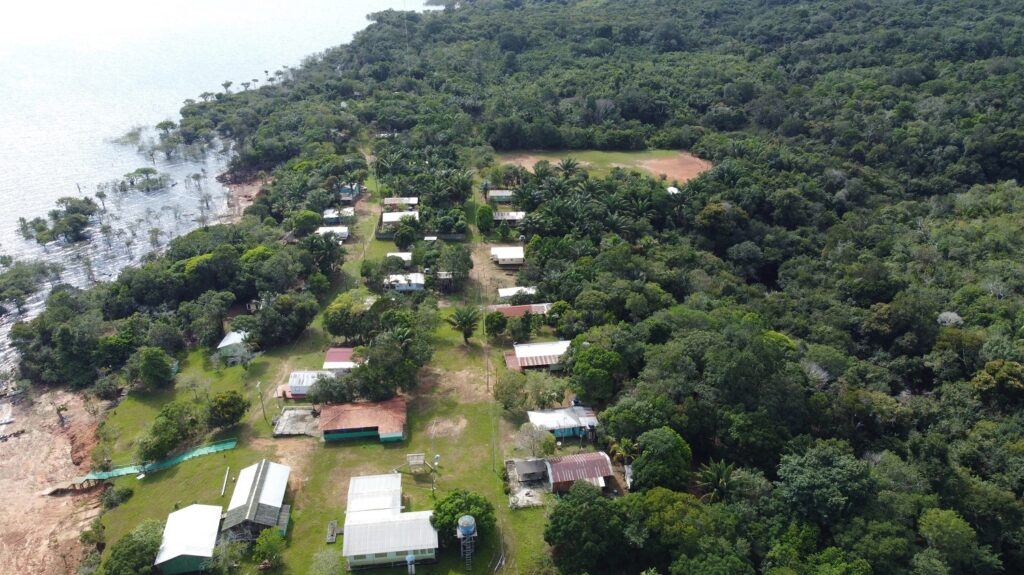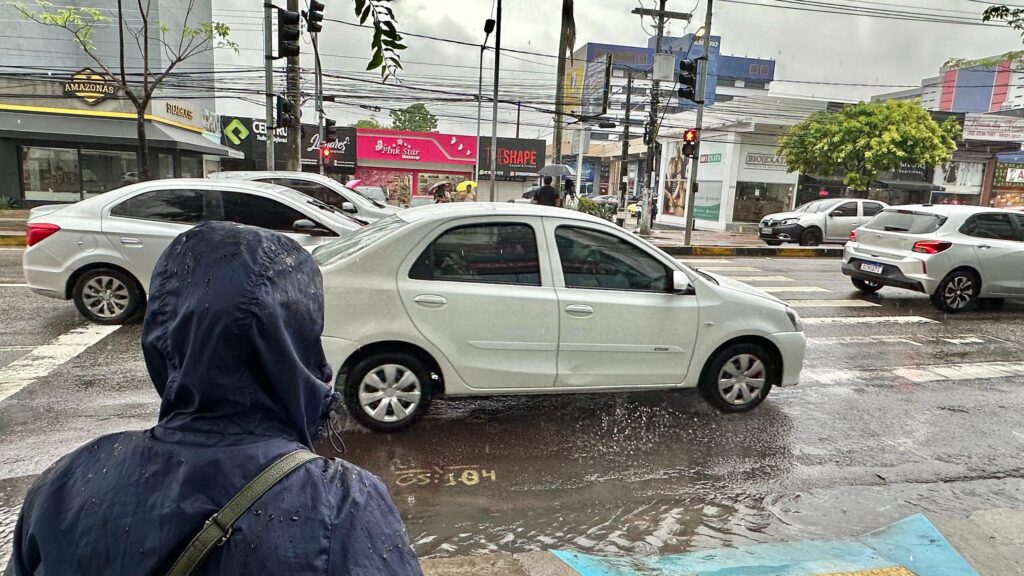Amazon cities among the most exposed to environmental disasters
16 de October de 2025

By Fred Santana – From Cenarium
MANAUS (AM) – The report “Climate Outlook 2025”, prepared by TETO Brazil in partnership with the Insper Center for City Studies, reveals the inequalities faced by communities in the Amazon in the face of the impacts of climate change. The document, which gathers data from 119 communities in 51 municipalities across 20 Brazilian states, was released on Tuesday, the 14th.
The study highlights that the effects of droughts, floods, and extreme weather events are already compromising the way of life of entire populations in the Legal Amazon. Among the locations analyzed, it cites cities such as Eirunepé, Iranduba, and Manaus, in Amazonas; Rio Branco, in Acre; Belém, in Pará; Porto Velho, in Rondônia; Boa Vista, in Roraima; and Tartarugalzinho, in Amapá.
These regions were included in the survey for concentrating communities in situations of socio-environmental vulnerability, with precarious infrastructure and a low capacity for adaptation to climate transformations.
One of the main case studies in the document is the Saracá Community, located in the Rio Negro Sustainable Development Reserve (SDR) in Iranduba, Amazonas. The region faces direct impacts from increasingly intense droughts and floods of the Rio Negro, phenomena that affect fishing, transportation, and local supply. The lack of basic sanitation and limited access to public policies worsen the isolation of riverside families.

The report highlights that these climate changes disrupt the river’s natural balance and threaten traditional subsistence practices such as agriculture and extractivism. The document also mentions the work of organizations such as the Sustainable Amazon Foundation (FAS), the Institute for the Conservation and Sustainable Development of the Amazon (IDESAM), and the Institute for Ecological Research (IPÊ), which develop support projects for these communities.
TETO Brazil states that the goal of Climate Outlook 2025 is to give visibility to populations living on the margins of public policy, reinforcing the need for investment in infrastructure, housing, and climate adaptation. The presence of Amazonian cities in the study reflects the breadth of the challenges faced by communities that live daily with the intensification of extreme climate events and the absence of structural solutions.
The report emphasizes that from Tartarugalzinho, in Amapá, to Eldorado do Sul, in Rio Grande do Sul, a common pattern emerges: climate inequality affects poor and peripheral populations more severely. In the case of the Amazon, the effects of the environmental crisis are amplified by dependence on rivers and the lack of mitigation policies, making the region one of the most sensitive to climate transformations in the entire country.
Manaus suffers from rainfall
In Manaus, the report points out urban problems related to climate events. It cites flooding, landslides, and housing in risk areas, exacerbated by the expansion of settlements on slopes and along stream banks. Residents reported an overload on public services during periods of heavy rain and a lack of sufficient preventive actions by municipal authorities.

According to the publication, the lack of adequate infrastructure amplifies the impacts of climate change on Amazonian communities. In riverside areas, the absence of sanitation and drainage facilitates flooding and water contamination. In urban regions, disorderly occupation increases exposure to disasters. In both contexts, vulnerability is worsened by geographic isolation or insufficient public policies.
The document also cites the presence of the Social and Environmental Program for the Streams of Manaus (Prosamin+) among the institutional partners of the research. This participation is mentioned in the context of local initiatives aimed at managing flood-prone areas and resettling families, which reinforces the relevance of Amazonas in discussions about climate adaptation.

